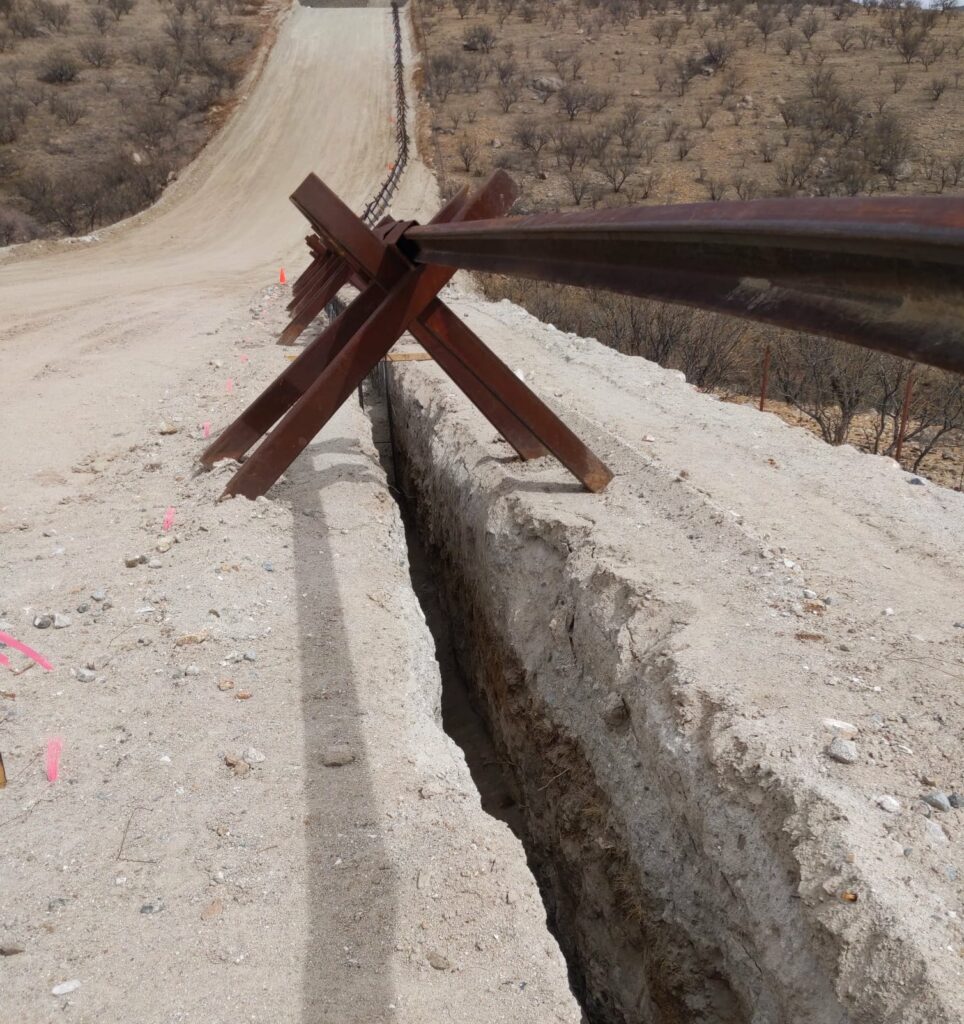By Tamara Bedic, NLG-NYC Animal Rights Committee Chair
Thursday, May 13th, Congressmembers Barragan, Vela, Quigley and Grijalva joined three national wildlife groups to address the harm Trump’s border wall causes over 90 endangered species. Hosted by the Animal Rights Committee of the NLG-New York City chapter, the 75-minute webinar (our seventh!) drew an audience of over 320, dividing 12 panelists into political, legal and scientific segments.
In addition to raising serious human rights concerns, Trump’s billion dollar gift to the construction industry is just the most recent manmade barrier keeping animals from water, food, mates and—in the case of this mother mountain lion—from her cub. (Cubs can pass between the bollards; adults must hazard an 18-foot fence and risk being shot by Border Patrol.)
At the heart of this ecocide is President Bush’s 2005 Real ID Act, which allows presidents to waive every environmental law and impact statement to avert a national emergency. After 2005, waves of virtually impenetrable border walls have been built, with Trump’s being the biggest and most expensive—nearly $22 million per mile.
- Speakers explained exactly why different endangered species were pushed further towards extinction by these structures. For example:
- Pollinators (including endangered bat, bird, and butterfly species) are disoriented by the 24-hour lighting atop the wall
- Heavily inbred species like the Mexican wolf are severed from half of their population (i.e. their gene pool), which intensifies inbreeding
- Several male Jaguars already dispersed into Arizona and New Mexico will die without mating, as there being no female jaguars north of the border wall
- 6-foot Pygmy owls skim the ground at heights between 3 and 15 feet. In 250+ flights, only a single owl flew at a height of 20 feet (and he was a juvenile). Pygmy owls can’t fly over the wall
While consequences for endangered terrestrial species are dire, aquatic species were extirpated altogether. When Homeland Security trucks rolled up to the San Bernardino Wildlife Refuge in Cochise County, AZ, they sucked up so much water to make concrete they permanently destroyed prehistoric artisanal springs, bleeding three ponds dry. The last remaining Yaqui catfish in the US lived in those ponds. Over at the Organ Pipe Cactus National Monument in Pima County, AZ, the artificial Quitobaquito pond lining cracked from the tremors of construction. The water leaked out and the pond is now a mud flat, killing the last hundred or so remaining Sonoyta Pupfish—along with the Sonora mud turtles.
Ecologists watching and recording this accelerated extinction, such as the Wildland Network’s Myles Traphagen and Sky Island Alliance’s Emily Burns, are calling for removal of the wall and immediate remediation of especially egregious construction dangers—like open, 6-foot deep pits stretching for miles, left to cave in when the monsoons hit (see photo).

Six-foot-deep open trench created during border wall construction poses threat to natural wildlife. (Credit: Su Libby)
While the Biden administration issued a 60-day moratorium on construction of Trump’s wall, those 60 days are now up and there has been no further directive. What’s alarming are amendments like Senator Ron Johnson’s (“prohibiting the cancellation of contracts for physical barriers and other border security measures,”) slyly embedded in Democratic bills (in this case, Schumer’s S.1260 – Endless Frontier Act). Lack of decisive leadership signals an uphill slog and centrists will require prodding by progressives every step of the way.
Our May 13th webinar made local New York news, but far more satisfying would be removing this embarrassing, destructive boondoggle from our natural landscape. Given our racism, ignorance, and lack of foresight, that day remains far off.
If you’d like to learn more about Endangered Species and Border Walls, “follow” the Animal Rights Committee Facebook page at https://www.facebook.com/NLGNYC.Animal.Rights/ Every night, a new clip of the webinar is uploaded to the Video tab of our Facebook page.
If you have an animal rights topic you would like to suggest for a webinar or a question you would like answered, post on that Facebook page above or reach out to me at
tamara_bedic@yahoo.com.
